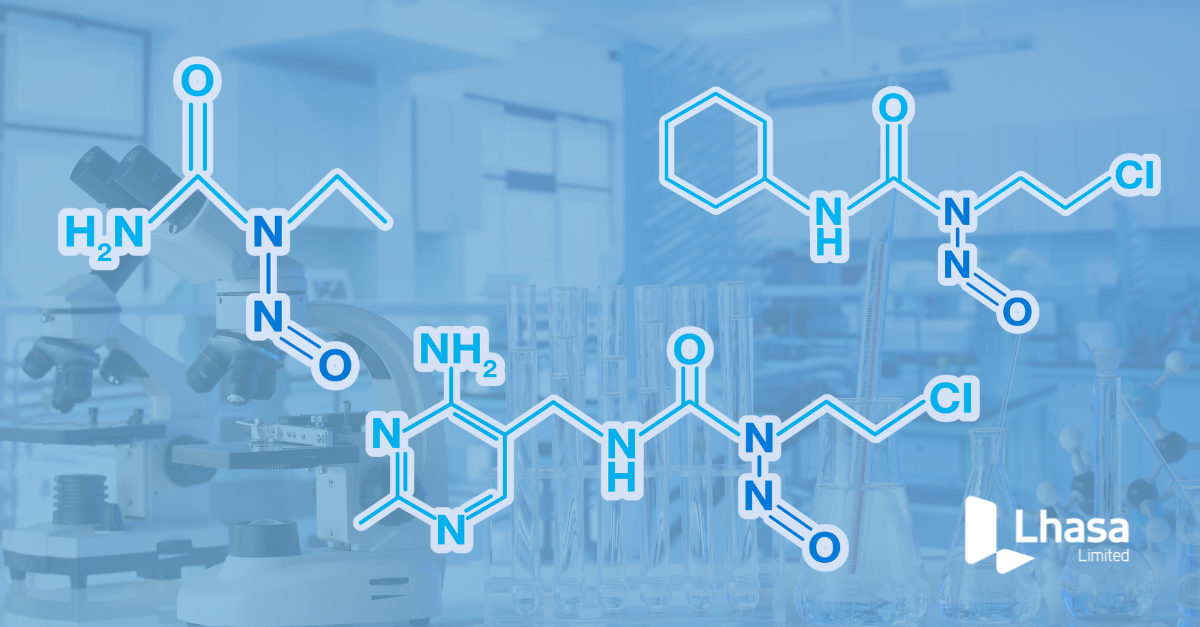Article written by Ally Reeves with top tips provided by Sara Atkinson.
A key consideration within drug substance synthesis is the potential presence of mutagenic impurities. Potentially mutagenic impurities (PMIs) often arise from reagents which are essential for the synthesis of a final active pharmaceutical ingredient (API) meaning that the risk is therefore often unavoidable. As a result, there is a need to assess the risk posed by mutagenic impurities.
To discuss this topic in more detail, we were delighted to welcome Andrew Teasdale PhD and Muzaffar Khan PhD, to present at our webinar; Controlling potentially mutagenic impurities – hear from industry experts!
Andrew is currently the chair of AstraZeneca’s Impurity Advisory Board and has a wealth of knowledge accumulated over his 20+ years of working within the pharmaceutical industry. Andrew is a leading AZ expert for a number of key impurity areas, including mutagenic impurities (MIs). Andrew was one the industry experts who worked closely with Lhasa to develop Mirabilis, our software solution providing an industry-standardised approach for calculating purge factors of PMIs.
Muzaffar is a Senior General Manager within Regulatory Affairs at Laurus Labs Limited – an Indian pharmaceutical and biotechnology company headquartered in Hyderabad. Muzaffar has significant industry experience of using Mirabilis for proposing pragmatic control strategies for PMIs, whilst improving Laurus Labs’ ICH M7 compliance.
In case you missed this event, Sara Atkinson, Senior Business Development Manager at Lhasa has summarised the top eight take away tips from the webinar, for quick and easy consumption below.
Top tips from Andrew’s presentation:
- The focus of Mirabilis is on the downstream fate of Potentially Mutagenic Impurities (PMIs) however, it can be used for non-mutagenic compounds – in fact, AstraZeneca use it for solvents too.
- Controlling PMIs using Control Option 4 is not just about reducing the analytical testing, it is also about evaluating the potential risk against the actual risk posed.
- Mirabilis takes a conservative approach to predicting purge, typically under-predicting by a factor of 10 which is important to remain robust as it should not overpredict.
- A recent IQ survey of 11 pharmaceutical manufacturers highlighted that 59% of 260 impurities accepted by regulators used an Option 4 control strategy. In addition to this, of the impurities for which Option 4 was used as the control strategy, the regulatory approval was very high – 96% for FDA, 95% for EMA and 97% for PMDA.[1]
Top tips from Muzaffar’s presentation:
- Utilising ICH M7 (section 8) Option 3 or 4 control strategies, results in huge resource – time, money and analytical testing – saving, without compromising on the quality of the assessment.
- Regulators are requesting calculation and discussion of purge factors, evidenced by the recent regulatory queries that Muzaffar shared.
- Using Mirabilis removes the subjectivity of assigning reactivity purge factors – especially as it is supported by related reactions, references, experimental data.
- In Muzaffar’s experience, regulators are more likely to accept purge calculations generated by Mirabilis over paper-based calculations.
For more detail, you can view Andrew and Muzaffar’s slides and recorded presentations, via this page. For more information on Mirabilis, please get in touch.
[1] Control of Mutagenic Impurities: Survey of Pharmaceutical Company Practices and a Proposed Framework for Industry Alignment | Organic Process Research & Development
Last Updated on January 25, 2024 by lhasalimited



